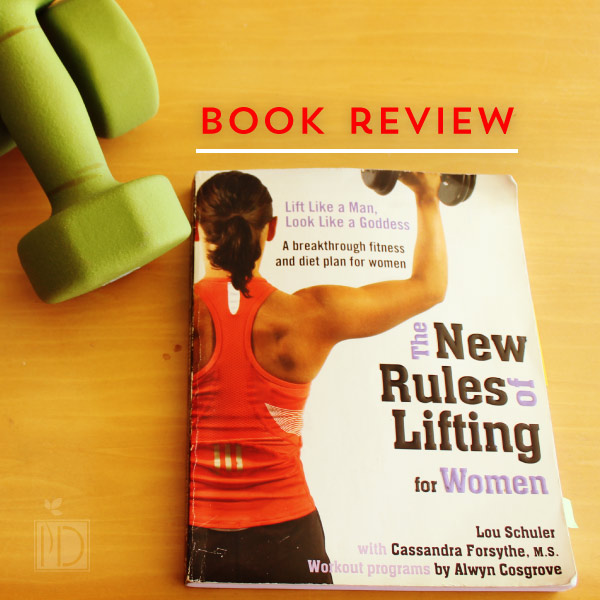Book Review: The New Rules of Lifting for Women
 Although a little bit dated (it was published in 2007), The New Rules of Lifting for Women by Lou Schuler has valuable information that I am afraid many women still neglect. It is a quick read and is easily accessible for anyone, even if you haven’t yet been brave enough to hit the weights in the gym. Although many of us are well aware that adding weights to our workout routine can be valuable to lose fat, gain muscle, and improve our overall wellness, we still listen to so many ‘myths’ about weightlifting that inhibit us from reaching our full potential and our maximum results.
Although a little bit dated (it was published in 2007), The New Rules of Lifting for Women by Lou Schuler has valuable information that I am afraid many women still neglect. It is a quick read and is easily accessible for anyone, even if you haven’t yet been brave enough to hit the weights in the gym. Although many of us are well aware that adding weights to our workout routine can be valuable to lose fat, gain muscle, and improve our overall wellness, we still listen to so many ‘myths’ about weightlifting that inhibit us from reaching our full potential and our maximum results.
Schuler spends Part 1 humorously debunking these myths while creating new ‘rules’ for the reader to follow with the research to back it up. For example, Schuler writes, “A woman who’s willing to work like a galley slave in Spinning class, twist herself into Gordian knots in the yoga studio, and build up enough core strength with Pilates to prop up a skyscraper will walk into the weight room, pick up the pastel colored Barbie weights, and do the exact opposite of what will give her the results she wants” (page 6). His solution? Lift like a man. Schuler basically tells us that there is no difference between men and women when it comes to hitting the weight room and that by not being afraid of being too ‘bulky’ we will actually increase our metabolism, gain muscle, lose fat, and get closer to achieving our goal physique.
Part 2 dives into nutrition and how as women, we have been led to believe that the less food we eat, the more likely we will achieve our goal weight or figure. Schuler disrupts this thinking as well by providing research and suggestions for what we really should be eating. He does not advertise a particular sort of diet (besides generally calling for more protein) but rather, accepts that there is more than one path to get where you want to go as a long as you don’t neglect any one category of macronutrients (protein, fat, and carbs). In fact, he says, “ Basically, all health-conscious people end up at the same place. They all live longer and have fewer disabilities than people who let themselves go. The particulars aren’t as important as the fundamental choice to exercise, eat well, and enjoy life without overdoing it” (page 52). A food plan is included in this section with a variety of simple snacks and delicious sounding meals. I haven’t tried all of the meals, but the Slow-Cooker Spicy Shrimp and Chicken Jambalaya (p. 92) is particularly yummy. This is no cookbook but gives enough examples for you to get the picture.
Part 3 goes into the actual workout plan. It is illustrated, easy to understand, and well explained. The premise that Schuler uses is to work big muscle groups rather than isolating small ones (think biceps, triceps) in order to achieve better results faster. He explains that it is more efficient to work big muscle groups because smaller muscles will get incorporated into the whole routine naturally. The workouts are full body and great for anyone who wants a solid weightlifting routine.
The New Rules of Weight Lifting for Women is a good, quick read that I enjoyed. Schuler is engaging and knowledgeable without being overbearing. I recommend this read for beginner to intermediate weightlifters but think that it may be a bit basic for advanced lifters.
I’ll leave you with the simple bottom line from Schuler about his approach in this book:
“If everything my coauthors and I recommended were to be summed up in three steps, it’s hard to go wrong with these:
- Metabolism
- Anaerobic Exercise
- Nutritional Consistency
Conveniently, they give us a nice, easy to remember acronym – MAN (as in Lift Like a...)” (p. 45).
What resources do you use to plan your trip to the gym?